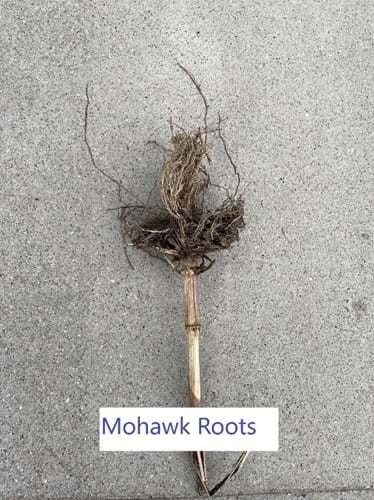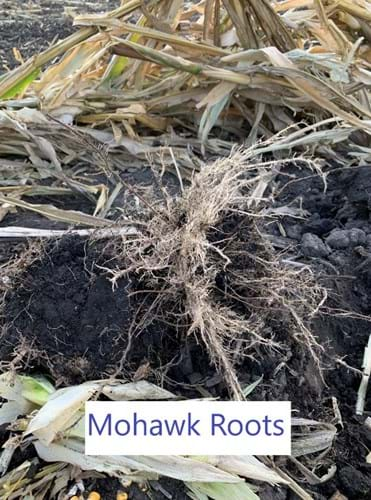Planting In Proper Conditions; Creating Variable Rate Seeding Plans; Corn Plantability Guide Now Available
BY Dairyland Seed Agronomy Team
EARLY SEASON PLANTING THOUGHTS
As we move into April, the excitement of planting is palatable. The months of preparation and speaking with advisors and friends all builds to the moment that is right around the corner. Planting season, like any other season, comes with its own set of challenges, and the biggest challenge can often be waiting. Data from Universities and seed companies often shows where planting earlier can increase yield. Planting early in proper conditions is what creates more yield. Favorable environmental conditions, such as soil temperature, soil moisture and air temperature, are all key to successful crop establishment.

Soil and air temperature are key to promote early vigor, which can be described as the “race to V2”. Average planting temps for early planting are around 50°F air temperature and 55°F soil temperature. The optimum soil and air temperature is between 68°F and 77°F. Lower temperatures create opportunities for a number of issues.
Cold Inhibition: Temperatures less than 50°F can cause cells to rupture. Seeds will germinate, but no further progress in development.
Slower emergence: Cold soil conditions can lead to uneven emergence.
Soil moisture can also vary greatly in the spring. In the Dairyland Seed footprint, we have areas that could use some rain and some areas who have been kept out of the field due to constant rains. Planting depths on corn of 1.5 to 2 inches is the general recommendation, but often in droughty scenarios, planting deeper into moisture is needed. Folks under irrigation maintain a constant soil planting depth and water as necessary to promote germination, but not everyone has this capability. Seeds that sit in dry soil are at greater risk of experiencing environmental hazards than seeds that are planted into adequate moisture and emerge in 5 to 7 days. Planting deeper (3 inches or more) causes heartburn in heavy soil areas where surface crusting can be an issue which is a legitimate concern. Weather forecasts at the date of planting can help us make planting depth decisions if needed.

The most common early season planting “sin” is planting into saturated soils. There are scenarios when wet holes cannot be avoided as they may not be visible from the surface. Planting into saturated soils can cause sidewall compaction in the furrow which leads to “Mohawk” roots in corn plants. The roots of the plants grow down the row and are not able to branch between the row’s well due to the compaction in the sidewall caused by the planter. The roots of these plants resemble a mohawk hair cut or a fan as shown in the pictures below. This root structure makes the corn susceptible to wind damage and late season standability.


The time spent planning and preparing for planting all seems to come together as seed bags are opened and wheels begin to turn. If you have any questions, contact your Dairyland Seed DSM or Regional Agronomist.
VARIABLE RATE SEEDING
This season the Dairyland Seed Agronomy Team has been helping a few customers create variable rate seeding (VRS) plans with Corteva’s Granular Insights. For those who implement VRS, you hopefully have all of your prescriptions written and ready to go. If you are reviewing your finalized plans or if you recently decided to give variable rate seeding a try, here are a few reminders:
- Compared to flat rate seeding, VRS success can vary; so, don’t overthink it. Seeding rates are defined by “decision” or “management” zones that can be based on a simple set of parameters or more complex modeling systems. Three to five different rates will probably do the job for most fields, especially if starting out.
- Key on “macro” level management zones first: those highly contrasted areas. The easiest variable rate wins are found in fields that have wide changes in things like soil drainage, major soil type changes, slope, etc. You can get fancy with other minor factors later. (See point #4).
- High populations do not translate to high yield. It’s about hitting an economic sweet spot for the production capacity of each environment within a field. Also think about agronomic risks: high populations can create stalk and root risks.
- Test your VRS scripts! Choose a couple passes in the field where multiple management zones will be encountered and plant flat rates. This will verify the performance of each population and of the overall seeding plan, allowing for adjustment in future seasons.
- Variable rate or not, the best planter operators are constantly stopping the tractor to dig seed behind the planter.
If you are looking to try variable rate seeding in the future, or simply want to evaluate and refresh your program, please reach out to the Dairyland Seed Team.
SEED CORN PLANTABILITY GUIDELINES
Excellent planting accuracy and stands can be achieved with all seed sizes when using appropriate planter adjustments and calibration. The Dairyland Seed plantability guidelines are designed to provide management tips to help growers achieve maximum planter performance and precise planting accuracy with seed of all sizes.
This eight-page guide includes great management tips to help achieve maximum planter performance. Topics covered include:
- Batch-Specific Plantability Information
- Hybrid Plantability with LumiGEN® Seed Treatments
- Bulk Planter Systems
- Seed Lubricant Guidelines by Planter Manufacturer1
- Planter and Meter Maintenance
- Optimizing Performance of John Deere Vacuum Planters
- Tips When Using Precision Planting vSet® and eSet®
- Optimizing Performance of Kinze Vacuum Planter
- Precision Planting Finger-Type Precision Meter
- Optimizing Performance of White Planters
- Optimizing Performance of Kinze or John Deere Finger Planters
- Optimizing Performance of Monosem NG+ Planters
- Optimizing Performance of Case IH 1200 Series ASM Planters
- Optimizing Performance of Case-IH 800, 900, 950 and 955 Early Riser Planters
Click here to find the guide on the Dairyland Seed website https://www.dairylandseed.com/articles/dairyland-seed-plantability-guide/
 |
 |
 |
 |
 |
| Brian Weller Western Region 507.456.3034 |
Dan Ritter Central Region 219.863.0583 |
Branden Furseth Northern Region 608.513.4265 |
Mark Gibson Eastern Region 260.330.8968 |
Amanda Goffnett Eastern Region 989.400.3793 |
